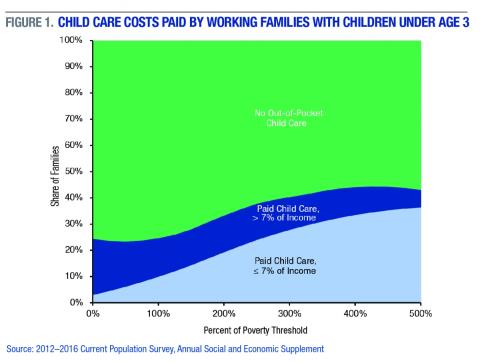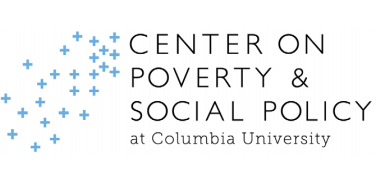download the brief
Key Findings
Low-income families with working parents face significant burdens paying for child care, which can function as a barrier to work and often means parents must rely on child care arrangements that are less formal and less stable.1 Amid national concerns about the high cost of child care, it is important to keep this issue at the forefront. Given the especially high costs of care for very young children, this snapshot highlights the child care costs faced by families with a child under age 3. Figure 1 shows the share of families paying for child care (bottom sections) by their income level. As a family’s income-to-poverty ratio rises, they are more likely to pay for child care. Poorer families who do pay for child care are much more often paying over 7 percent of their income on child care, the current benchmark of affordability from the U.S. Department of Health and Human Services.2

1. W. Primus and K. Daugirdas, “Reducing Child Poverty by Improving the Work-Based Safety Net,” in For Better or Worse: Welfare Reform and the Well-Being of Children and Families, edited by G.J. Duncan and L.P. Chase-Lansdale (New York: Russell Sage Foundation, 2001), 253.
2. U.S. Department of Health and Human Services, “Child Care and Development Fund (CCDF) Program,” 81 Fed. Reg. 67438 (September 30, 2016), https://www.federalregister.gov/d/2016-22986/p-355.

This research was made possible by a gift from Jay Robert Pritzker and Mary Kathryn Pritzker.
This research was conducted by the Carsey School of Public Policy and the Center on Poverty and Social Policy at Columbia University.
